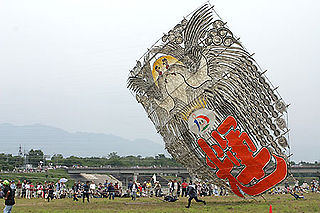 W
WA kite is a tethered heavier-than-air or lighter-than-air craft with wing surfaces that react against the air to create lift and drag forces. A kite consists of wings, tethers and anchors. Kites often have a bridle and tail to guide the face of the kite so the wind can lift it. Some kite designs don’t need a bridle; box kites can have a single attachment point. A kite may have fixed or moving anchors that can balance the kite. One technical definition is that a kite is “a collection of tether-coupled wing sets“. The name derives from its resemblance to a hovering bird.
 W
WAn airborne wind turbine is a design concept for a wind turbine with a rotor supported in the air without a tower, thus benefiting from the higher velocity and persistence of wind at high altitudes, while avoiding the expense of tower construction, or the need for slip rings or yaw mechanism. An electrical generator may be on the ground or airborne. Challenges include safely suspending and maintaining turbines hundreds of meters off the ground in high winds and storms, transferring the harvested and/or generated power back to earth, and interference with aviation.
 W
WThe Allsopp Helikite is a type of kite-balloon or kytoon designed by Sandy Allsopp in the UK in 1993. The Helikite comprises a combination of a helium balloon and a kite to form a single, aerodynamically sound tethered aircraft, that exploits both wind and helium for its lift.
 W
WIn fluid dynamics, angle of attack is the angle between a reference line on a body and the vector representing the relative motion between the body and the fluid through which it is moving. Angle of attack is the angle between the body's reference line and the oncoming flow. This article focuses on the most common application, the angle of attack of a wing or airfoil moving through air.
 W
WThe arckite or twinskin kite is a type of traction kite designed and patented by Peter Lynn. It is a very stable, safe and secure type of powerkite. It can be used for all kinds of kite powered sports, for example: kiteboarding, landboarding, kite buggying or snowkiting. The shape of the kite is similar to a C shaped leading edge inflatable kite, however the construction is similar to a foil kite. These kites also fall into a category of foils called "closed-cell inflatables", meaning that the ram-air inlets on the leading edge of the kite are normally closed by flaps that act as one-way valves to maintain internal air pressure. It is this feature that makes the kite useful for kitesurfing since, unlike standard open-cell foils, if the kite crashes on the water, it will stay inflated and float long enough for the rider to recover and re-launch.
 W
WA Bermuda kite is a kite made using traditional geometric designs, are quite colorful, and is an art form as much as a recreational tool. They are traditionally flown in Bermuda only at Easter. The kites are typically hexagonal, though larger examples, particularly, may be octagonal, or have even more sides. They are constructed from flat sticks arrayed like spokes of a wheel, with a nail at the axis. A string passes around the ends of the sticks, marking out the edges, and concentric strings are arranged inside of this, all contributing to the rigidity of the structure. Colored tissue paper is glued into the spaces created between strings and sticks. Using different colors, patterns are created. The kite has a single stick secured at one end to the axis, and rising at a shallow angle from the plane created by the other sticks. This stick, which forms the head of the kite, extends considerably beyond the perimeter of the hexagon. It passes over the midpoint of one side of the hexagon, and a string creates a triangular shape from the corner at one side of the head stick, to its tip, and back to the opposite corner. Strips of paper are folded and glued along this string. A long, cloth strip tail is fitted to the kite, without which it would be unable to fly.
 W
WBow kites are leading edge inflatable kites that incorporate a bridle on the leading edge. They are used for the sport of kiteboarding. They can be identified by a flat, swept-back profile and concave trailing edge allowing the kite greater depower. Bow kite design was pioneered by Bruno Legaignoux, and have been licensed to many kite manufacturers. The first major manufacturer to introduce these bow kites to the United States was Cabrinha Kites.
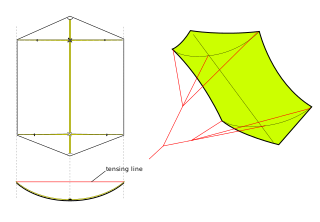 W
WBowed kites such as the Japanese rokkaku, and traditional versions of the more familiar "diamond" shaped kites such as the Malay or Eddy, are tensioned into a bow in order to improve their stability to the point where a tail often becomes unnecessary.
 W
WA box kite is a high performance kite, noted for developing relatively high lift; it is a type within the family of cellular kites. The typical design has four parallel struts. The box is made rigid with diagonal crossed struts. There are two sails, or ribbons, whose width is about a quarter of the length of the box. The ribbons wrap around the ends of the box, leaving the ends and middle of the kite open. In flight, one strut is the bottom, and the bridle is tied between the top and bottom of this strut. The dihedrals of the sails help stability.
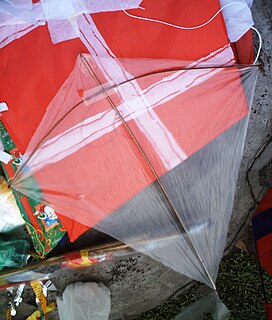 W
WChapi-chapi is a small two-stick kite that can be quickly constructed from cheap materials such as newspapers, broom sticks, or discarded plastic sheet. It is very popular in the Philippines. The name itself colloquially means, "assembled fast" or "quickly improvised". A strong, straight stick is used for the vertical frame. The horizontal stick is tensioned into a bow in order to provide greater support for the paper or plastic sheet. A very long bottom tail is almost always necessary, while the side tails or fins are optional.
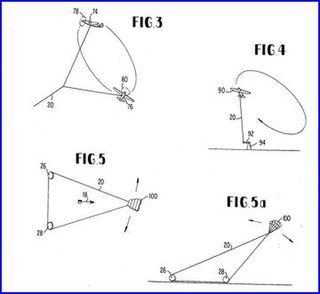 W
WCrosswind kite power is power derived from a class of airborne wind-energy conversion systems or crosswind kite power systems (CWKPS) characterized by a kite system that has energy-harvesting parts that fly transverse to the direction of the ambient wind, i.e., to crosswind mode; sometimes the entire wing set and tether set is flown in crosswind mode. These systems at many scales from toy to power-grid-feeding sizes may be used as high-altitude wind power (HAWP) devices or low-altitude wind power (LAWP) devices without having to use towers. Flexible wings or rigid wings may be used in the kite system. A tethered wing, flying in crosswind at many times wind speed, harvests wind power from an area that is many times exceeding the wing's own area. Crosswind kite power systems have some advantages over conventional wind turbines: access to more powerful and stable wind resource, high capacity factor, capability for deployment on and offshore at comparable costs, and no need for a tower. Additionally, the wings of the CWKPS may vary in aerodynamic efficiency; the movement of crosswinding tethered wings is sometimes compared with the outer parts of conventional wind turbine blades. However, a conventional traverse-to-wind rotating blade set carried aloft in a kite-power system has the blade set cutting to crosswind and is a form of crosswind kite power. Miles L. Loyd furthered studies on crosswind kite power systems in his work "Crosswind Kite Power" in 1980. Some believe that crosswind kite power was introduced by P. Payne and C. McCutchen in their patent No. 3,987,987, filed in 1975, however, crosswind kite power was used far before such patent, e.g., in target kites for war-target practice where the crosswinding power permitted high speeds to give practice to gunners.
 W
WFighter kites are kites used for the sport of kite fighting. Traditionally most are small, unstable single-line flat kites where line tension alone is used for control, at least part of which is manja, typically glass-coated cotton strands, to cut down the line of others.
 W
WFoil kites are soft kites based on the design of the parafoil. They consist of a number of cells running fore to aft, some or all of which are open at the front to allow air to inflate the kite so it takes on an aerofoil section. Due to the amount of power that these kites can generate, they can be used for a variety of different activities including kitesurfing, kite landboarding, snowkiting, kite buggying, kite-energy systems or airborne wind energy, and recreational kiting.
 W
WImpian Kite is Malaysia’s largest hand-made inflatable kite. Since 2004, it has been listed as such in Malaysia’s Book of Records, measuring 16.7 by 36.4 metres.
 W
WAn Incendiary kite(also Firebomb kite, flaming kite, Fire Kite) is a kite with a bomb, incendiary device, or Molotov cocktail attached.
 W
WThe ram-air inflatable single-line kite is one of the few modern inventions in the world of kite design. Although Francis Rogallo's early kite patents had ram-air members in the claims, Domina Jalbert's parafoil ram-air wing, patented in 1944, emphatically changed the kite airscape for inflatable kites.
 W
WJojo Wings is a Czech aircraft manufacturer based in Roudnice nad Labem. The company specializes in the design and manufacture of paragliders and parachutes in the form of ready-to-fly aircraft. The company also makes parafoil kites.
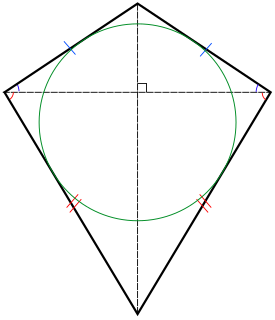 W
WIn Euclidean geometry, a kite is a quadrilateral whose four sides can be grouped into two pairs of equal-length sides that are adjacent to each other. In contrast, a parallelogram also has two pairs of equal-length sides, but they are opposite to each other instead of being adjacent. Kite quadrilaterals are named for the wind-blown, flying kites, which often have this shape and which are in turn named for a bird. Kites are also known as deltoids, but the word "deltoid" may also refer to a deltoid curve, an unrelated geometric object.
 W
WKite aerial photography (KAP) is a type of photography. A camera is lifted using a kite and is triggered either remotely or automatically to take aerial photographs. The camera rigs can range from the extremely simple, consisting of a trigger mechanism with a disposable camera, to complex apparatus using radio control and digital cameras. On some occasions it can be a good alternative to other forms of aerial photography.
 W
WThe kite can be used for many applications. Air kites, water kites, bi-media kites, fluid kites, gas kites, kytoons, paravanes, soil kites, solid kites, and plasma kites have niche applications that are furthering the interests of humans in both peace and conflict. Non-human-made kites have applications; some spiders make use of kiting.
 W
WThe kite experiment is a scientific experiment in which a kite with a pointed, conductive wire attached to its apex is flown near thunder clouds to collect electricity from the air and conduct it down the wet kite string to the ground. It was proposed and may have been conducted by Benjamin Franklin with the assistance of his son William Franklin. The experiment's purpose was to uncover the unknown facts about the nature of lightning and electricity, and with further experiments on the ground, to demonstrate that lightning and electricity were the result of the same phenomenon.
 W
WKite ice skating, sometimes referred to as para-skating or para ice skating, is an ice-based sport using a large controllable kite to propel ice skaters across frozen rivers, frozen lakes and other frozen surfaces. With a traditional diamond-shaped kite it's quite possible to go much faster than the wind speed by angling the kite much as a sailboat can trim its course and sails for greater speed. In fact, it's possible to exceed safe speeds quite easily, leaving one's legs exhausted from absorbing the shock of bumpy ice and becoming susceptible to spectacular crashes. On a gusty winter day one spends considerable time raising the kite in the air parallel to the ice to slow down somewhat.
 W
WKite landboarding, also known as land kiteboarding or flyboarding, is based on the sport of kitesurfing, where a rider on a surf-style board is pulled over water by a kite. Kite landboarding involves the use of a mountain board or landboard, which is essentially an oversized skateboard with large pneumatic wheels and foot-straps. Kite landboarding is a growing sport, and there are several competitions. Kite landboarding is attracting growing publicity although it is not yet as popular or as well known as kitesurfing.
 W
WKite Man is a fictional supervillain appearing in comic books published by DC Comics, most commonly depicted as a recurring adversary of Batman. His name is an homage to Peanuts protagonist Charlie Brown. The character has been generally regarded as a joke in comparison with other supervillains, due to his lack of super-powers, dimwitted personality, and the flimsy central concept that belies his identity as a super-criminal.
 W
WKite skating, sometimes referred to as Kiteblading, is a land-based extreme sport that uses powerful and controllable kites to propel riders of inline skates or off-road skates. They can reach speeds up to 60+ mph across parking lots, desert dry lakes, grassy fields, and sandy beaches.
 W
WKite running is the practice of running after drifting kites in the sky that have been cut loose in kite fighting. Typically the custom is that the person who captures a cut kite can keep it, so the bigger and more expensive looking the kite, the more people can usually be seen running after it to try to capture it.
 W
WKites are tethered flying objects which fly by using aerodynamic lift, requiring wind for generation of airflow over the lifting surfaces.
 W
WThe Kite-Eating Tree is a fictional tree in the Peanuts comic strip created by Charles M. Schulz. In the comics, when Charlie Brown attempts to fly a kite, the kite always ends up tangled in the tree. In an editorial from 1964, the U.S. Catholic stated that Charlie Brown's encounters with the Kite-Eating Tree represent "defeat, but not capitulation" because Charlie Brown "refuses to concede that the impossible won’t someday happen—that he will manage to get the kite in the sky, where it belongs."
 W
WKiteboarding or kitesurfing, is an extreme sport where the kiteboarder harnesses the power of the wind with a large controllable power kite to be propelled across the water, land, or snow. combines aspects of sailing, surfing, windsurfing, skateboarding, snowboarding, wakeboarding and paragliding. It is among the less expensive and the more convenient of the sailing sports.
 W
WKiteboating or kite boating is the act of using a kite rig as a power source to propel a boat. Kiteboating is a type of surface water sport, but it also has transportation uses
 W
WA kytoon or kite balloon is a tethered aircraft which obtains some of its lift dynamically as a heavier-than-air kite and the rest aerostatically as a lighter-than-air balloon. The word is a portmanteau of kite and balloon.
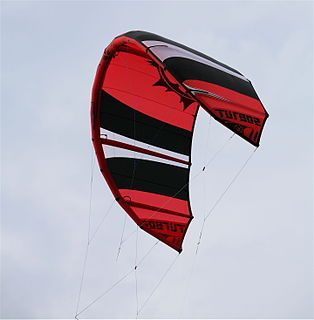 W
WA leading edge inflatable kite (LEI) is a single skin kite with inflatable bladders providing structure. It is useful as a power or traction kite. These kites are flown using 2, 4 or 5 control lines and a bar. A LEI is a great kite for water use because the inflated bladders cause it to float on the water surface. A LEI can sit on the water for an indefinite time and still be relaunched because, unlike a foil kite, there are no chambers that can fill with water. Generally used for kitesurfing and kiteboarding, leading edge inflatable kites come in many different sizes, most commonly from 5 to 18 square metres.
 W
WThe Malay kite is a model of tailless kite. First introduced to the West in a New York City newspaper article from October 1894, the Malay kite was used for recreation for centuries before this in parts of the Far East. The article detailed how a university professor ("Clayton") had erected a series of kites and bound them all together to one kite. These kites had no tail, were bowed and diamond-shaped, and were referred to by the article writer as "Malay kites". However, the existence of a Malay-like design may have already been heard of in the United States sometime before the publishing of the article; in the last edition of the American Boy's Handy Book, another tailless kite is described. The description of this kite, which was to be included as a chapter in the book, was sent in to the author sometime around 1882, eleven years before the Malay kite was mentioned in the newspaper.
 W
WA man-lifting kite is a kite designed to lift a person from the ground. Historically, man-lifting kites have been used chiefly for reconnaissance. Interest in their development declined with the advent of powered flight at the beginning of the 20th century. Recreational man-lifting kites gradually gained popularity through the latter half of the 20th century, branching into multiple sports. In the 21st century man-lifting kites are often used in kitesurfing, where brief launches can be followed by safe water landings and parasailing, where kites are towed behind a vehicle.
 W
WFighter kites in Afghanistan, Bangladesh, India, Nepal and Pakistan fly on abrasive string called manja. In Brazil, similar string is called "cerol", and in Chile "hilo curado".
 W
WRadio antenna kites are used to carry a radio antenna aloft, higher than is practical with a mast. They are most often associated with portable radio systems, usually with pre-World War I field equipment, and were also occasionally used to increase radio range on Naval ships. The use of kite supported antennae was limited because of difficulty in maintaining consistent antenna height, unpredictability of the wind, and improvements in radio antenna, transmission, and reception. During World War II and after they were used in conjunction with survival radios issued to aircraft flying over-water missions.
 W
WRobert Staunton Naish is an American athlete and entrepreneur who has won 23 World Championship Windsurfing titles. He is also considered a pioneer of kiteboarding and stand-up paddleboarding (SUP).
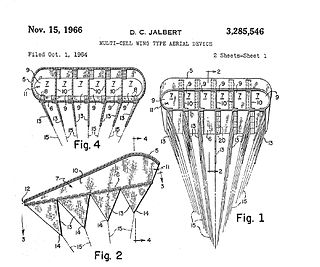 W
WA parafoil is a nonrigid (textile) airfoil with an aerodynamic cell structure which is inflated by the wind. Ram-air inflation forces the parafoil into a classic wing cross-section. Parafoils are most commonly constructed out of ripstop nylon.
 W
WParasailing, also known as parascending or parakiting, is a recreational kiting activity where a person is towed behind a vehicle while attached to a specially designed canopy wing that resembles a parachute, known as a parasail wing. The manned kite's moving anchor may be a car, truck, or boat. The harness attaches the pilot to the parasail, which is connected to the boat, or land vehicle, by the tow rope. The vehicle then drives off, carrying the parascender and person into the air. If the boat is powerful enough, two or three people can parasail behind it at the same time. The parascender has little or no control over the parachute. The activity is primarily a fun ride, not to be confused with the sport of paragliding.
 W
WA power kite or traction kite is a large kite designed to provide significant pull to the user.
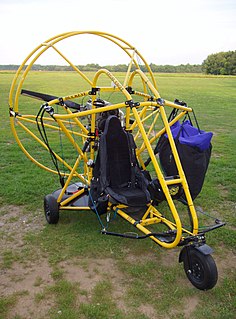 W
WA powered parachute, often abbreviated PPC, and also called a motorized parachute or paraplane, is a type of aircraft that consists of a parafoil with a motor and wheels. The aircraft's airspeed is typically about 25–35 mph (40–60 km/h). PPCs operate safely at heights ranging from a few feet off the ground to altitudes as high as 10,000+ ft (3.05 km), but typical operating heights are between 500 and 1500 feet above ground level (AGL). Equipped with a 5-15 gallon fuel tank, PPCs can typically be flown for about three hours before requiring refueling. They have very short take-off and landing rolls, sometimes less than 100 ft.
 W
WThe Rogallo wing is a flexible type of wing. In 1948, Francis Rogallo, a NASA engineer, and his wife Gertrude Rogallo, invented a self-inflating flexible wing they called the Parawing, also known after them as the "Rogallo Wing" and flexible wing. NASA considered Rogallo's flexible wing as an alternative recovery system for the Mercury and Gemini space capsules, and for possible use in other spacecraft landings, but the idea was dropped from Gemini in 1964 in favor of conventional parachutes.
 W
WThe Rokkaku dako (六角凧) is a traditional six-sided Japanese fighter kite. Traditionally, it is made with bamboo spars and washi paper. The rokkaku kite is often hand painted with the face of a famous Samurai. The structure is a vertically stretched hexagon with a four-point bridle. One bamboo runs from tip to toe, and there are two cross-spars. Flown on a taut string, the kite is stable and rises rapidly. When the line is released, the kite tumbles until tension is put on the line, at which point it takes off in the direction of the spine. Fighting two or more of these kites involves tipping over or destabilizing the opposing kite or cutting its kite line or bridle. Cows are often painted on kites to resemble wealth.
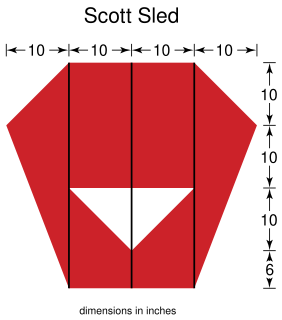 W
WA Scott Sled is a type of kite developed in the early 1960s by Frank Scott of Ohio and based on the sled kite, an earlier design by William Allison, also based in Ohio. In 1964 it was featured in Kite Tales, the newsletter of the American Kitefliers Association; as a result it became much more widely known. Many derivative designs have appeared since then, the design described here is as it appeared in 1964.
 W
WSkySails GmbH & Co. KG is a Hamburg-based company that sells kite rigs to propel cargo ships, large yachts and fishing vessels by wind energy. Ships are pulled by an automatically-controlled foil kite of some hundreds of square meters. For multiple reasons, they give many times the thrust per unit area of conventional mast-mounted sails.
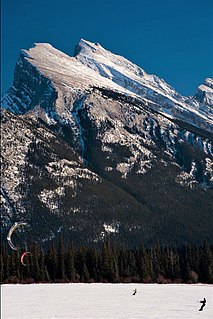 W
WSnowkiting or kite skiing is an outdoor winter sport where people use kite power to glide on snow or ice. The skier uses a kite to give them power over large jumps. The sport is similar to water-based kiteboarding, but with the footwear used in snowboarding or skiing. The principles of using the kite are the same, but in different terrain. In the early days of snowkiting, foil kites were the most common type; nowadays many kiteboarders use inflatable kites. However, since 2013, newly developed racing foil kites seem to dominate speed races and expedition races, like Red Bull Ragnarok and the Vake mini-expedition race. Snowkiting differs from other alpine sports in that it is possible for the snowkiter to travel uphill and downhill with any wind direction. Like kiteboarding, snowkiting can be very hazardous and should be learned and practiced with care. Snowkiting is becoming increasingly popular in places often associated with skiing and snowboarding, such as Russia, Canada, Iceland, France, Switzerland, Austria, Norway, Sweden, Finland and the Northern and Central United States. The sport is becoming more diverse as adventurers use kites to travel great distances and sports enthusiasts push the boundaries of freestyle, big air, speed and back country exploration.
 W
WA sport kite, also commonly known as a stunt kite, is a kite that can be maneuvered in the air. A related kite, also controllable and used for recreation, but capable of generating a significant amount of pull and used for providing movement, is the Power kite.
 W
WTeddy bear parachuting, sometimes referred to as parafauna, is a game in which teddy bears equipped with parachutes are dropped from a height. It is increasing in popularity as a charity fundraiser, and competitions based on the descent time are also common.
A tetrahedral kite is a multicelled rigid box kite composed of tetrahedrally shaped cells to create a kind of tetrahedral truss. The cells are usually arranged in such a way that the entire kite is also a regular tetrahedron. The kite can be described as a compound dihedral kite as well.
 W
WKites have been popular in Thai society for a long time. Since the Sukhothai period, King Ramkamhaeng fully supported kite flying, so kites became a main part of Thai culture. There was also evidence that King Rama V (1868-1910) of the Rattanakosin kingdom enjoyed kite flying very much so the formal competition of kite flying was firstly created in his reign. The famous venue for kite flying in Thailand is Sanam Luang, royal turf, which has been used since 1855 in Bangkok.
 W
WWau bulan is an intricately designed Malaysian moon-kite that is traditionally flown in the Malaysian state of Kelantan. It is one of Malaysia's national symbols, some others being the hibiscus. The reverse side of the fifty-cent coin of Malaysia features an intricately decorated wau bulan with a hummer on top. The logo of Malaysia Airlines (MAS) is based on the wau kucing.